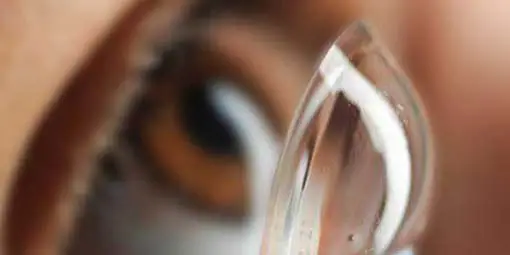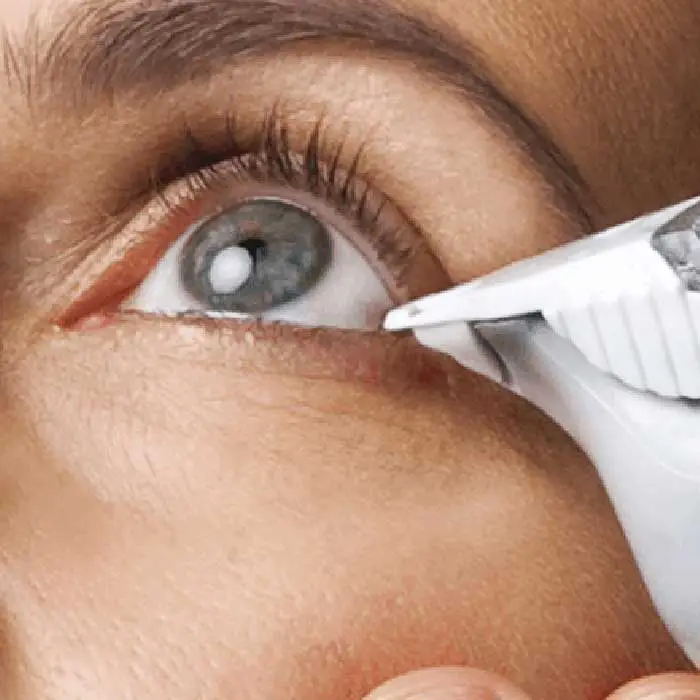What Are Scleral Contact Lenses? Understanding the Basics
22-08-2024
Introduction to Scleral Contact Lenses
Scleral contact lenses have become an increasingly popular option for individuals seeking improved vision and comfort, particularly for those with specific eye conditions that traditional contact lenses or glasses can't adequately address. These lenses are known for their unique design and ability to provide clear, stable vision where other solutions may fall short. Whether you're dealing with keratoconus, severe dry eyes, or other corneal irregularities, scleral lenses offer a tailored approach that can significantly enhance both vision and quality of life.Definition and Overview
Scleral contact lenses are large-diameter, rigid gas-permeable lenses that rest on the sclera (the white part of the eye) and vault over the cornea without touching it. They create a tear-filled reservoir between the lens and the cornea, providing comfort and clarity for individuals with irregular corneas, dry eyes, or other complex eye conditions. These lenses are custom-made to fit each patient, offering superior stability and improved vision compared to standard contact lenses.History and Development
Scleral contact lenses have a long history, dating back to the late 19th century. The first scleral lenses were made from blown glass and were developed by German glassblower F.A. Müller in 1888. These early lenses were cumbersome and uncomfortable, but they marked the beginning of contact lens development. In the early 20th century, the introduction of polymethyl methacrylate (PMMA) plastic allowed for lighter, more durable lenses, but these lenses were still impermeable to oxygen. It wasn’t until the 1970s that rigid gas-permeable (RGP) materials were developed, allowing oxygen to reach the cornea and making scleral lenses more comfortable and safer for extended wear. Over time, advancements in materials, design, and manufacturing technology have led to the modern scleral lenses we know today—customizable, comfortable, and highly effective for treating complex eye conditions.How Scleral Contact Lenses Differ from Traditional Lenses
Scleral contact lenses offer a unique approach to vision correction, particularly for individuals with specific eye conditions that aren't well-served by traditional lenses. Understanding how scleral lenses differ from conventional options is key to appreciating their advantages. These differences primarily lie in their size, design, and material composition, which together contribute to the enhanced comfort and visual clarity that scleral lenses provide.Size and Design Differences
Scleral contact lenses differ from traditional lenses primarily in their size and design. Traditional contact lenses are small and rest directly on the cornea, the clear front surface of the eye. In contrast, scleral lenses are much larger in diameter, covering the entire cornea and resting on the sclera, the white part of the eye. This unique design creates a tear-filled reservoir between the lens and the cornea, which not only enhances comfort but also provides superior stability and vision correction, especially for those with irregular corneas or severe dry eyes.Material Composition
The materials used in scleral lenses also set them apart from traditional lenses. While traditional soft lenses are made from hydrogel or silicone hydrogel, scleral lenses are made from rigid gas-permeable (RGP) materials. These RGP materials are durable, offer a stable fit, and are highly oxygen-permeable, allowing the cornea to "breathe" and maintain eye health. This oxygen permeability is crucial for long-term wear, reducing the risk of complications and ensuring that scleral lenses are both effective and safe for daily use.Who Should Consider Scleral Contact Lenses?
Scleral contact lenses are an excellent option for individuals who need specialized vision correction that traditional lenses cannot provide. They are particularly beneficial for those with specific eye conditions or irregularities that require a more customized solution.Ideal Candidates
Ideal candidates for scleral contact lenses include individuals who have not achieved satisfactory vision or comfort with traditional lenses or glasses. This often includes people with irregular corneas, such as those with keratoconus, as well as those with severe dry eye syndrome or post-surgical corneal conditions. Scleral lenses are also a good choice for individuals who experience discomfort or instability with regular contact lenses.Conditions Treated
Scleral lenses are designed to treat a variety of complex eye conditions. They are highly effective for managing keratoconus, a progressive thinning of the cornea that causes it to bulge into a cone shape. Additionally, they provide relief for severe dry eyes by maintaining a moisture-rich environment on the cornea. Other conditions that can be treated with scleral lenses include corneal scarring, post-surgical complications, and ocular surface disease.The Importance of Specialized Contact Lenses
Scleral contact lenses represent a significant advancement in the field of vision correction, offering a tailored solution for individuals with complex eye conditions. Their unique design and material composition provide superior comfort, stability, and visual clarity, making them an essential option for those who struggle with traditional lenses. The importance of specialized contact lenses like scleral lenses cannot be overstated, as they not only enhance vision but also improve the overall quality of life for many patients. By addressing specific eye conditions with precision, scleral lenses ensure that more people can experience clear, comfortable vision every day.Get Fit With Scleral Lenses
Considering scleral contact lenses? Schedule a consult and custom fitting with our optometrists in Edmonton today! Schedule An AppointmentFYEyes Blog Posts

What Is The Average Cost Of Scleral Contact Lenses (2025)?
Scleral contact lenses are specialized custom-crafted lenses.

Reasons To Consider Scleral Contact Lenses
Scleral contact lenses offer numerous benefits, especially to those with unique needs.

The Benefits Of Scleral Contact Lenses
cleral contact lenses redefine visual clarity and comfort for individuals with unique ocular needs.

Disadvantages Of Scleral Contact Lenses
These custom made, larger than normal, lenses possess a number of challenges.

Scleral Contact Lenses
Not a candidate for traditional contact lenses? Scleral contact lenses, that can be fit to irregular corneas, may be for you!

Prescription Sunglasses
Find protection from the sun, relief from eye drying wind, and clear vision with prescription sunglasses from our Edmonton optical.

Dry Eye Treatment
See relief from the itchiness, scratchiness, and redness caused by dry eye syndrome with care from our Edmonton eye doctors.
Frequently Asked Questions
Yes. Because scleral contact lenses are custom fit and custom-made to the patient, they do cost more than standard contact lenses.
With proper care and a stable prescription one can expect to be able their scleral lenses approximately 2 years before they require replacement.
